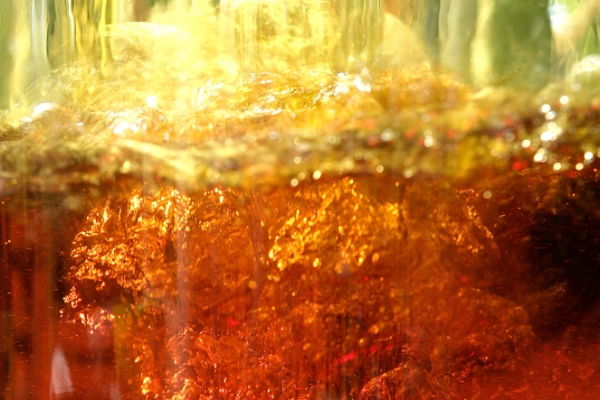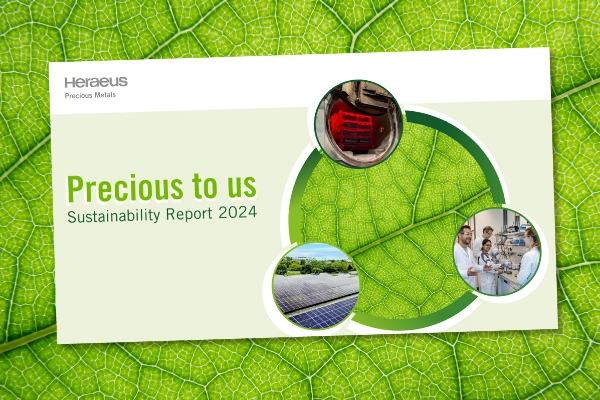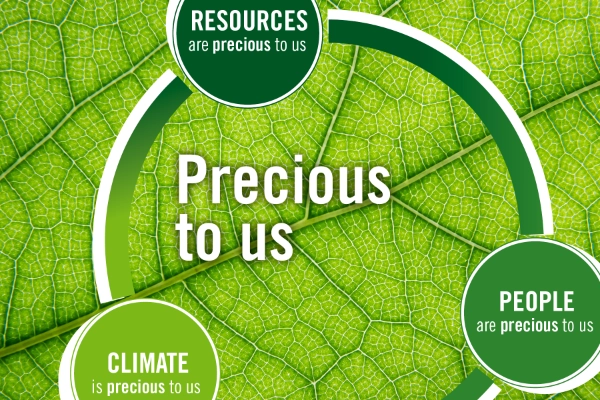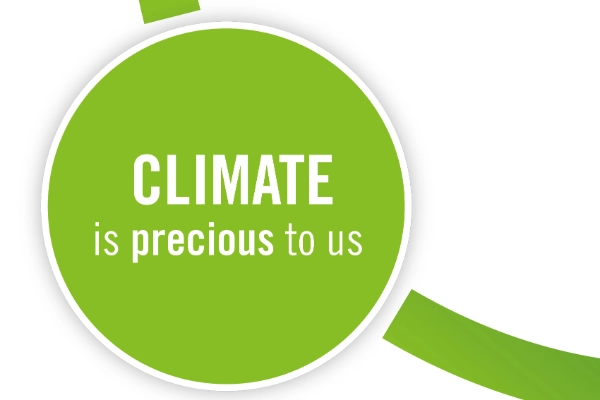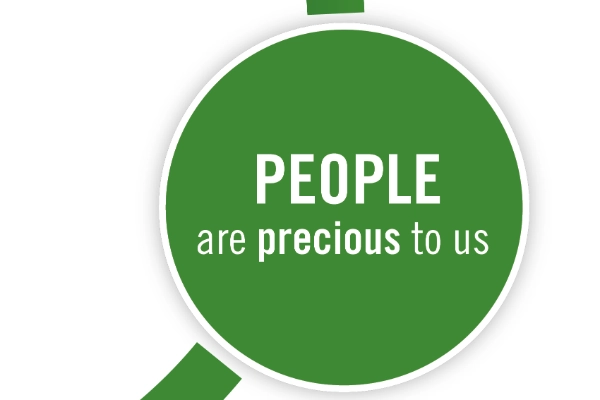Resources Are Precious to Us
Our business activities rely on precious resources. We live up to our responsibility by improving our processes and products so that they require fewer and fewer resources and by adopting circular approaches wherever possible. With recycling we recover large quantities of precious metals, which reduces the need for primary extraction.

Targets and Key Figures
Up to 99%1 Lower Carbon Footprint of Recycled vs. Primary Precious Metals
Many of our precious metal products are returned to us at the end of their lifetime. By making new products out of the recycled fine metal, we are continuously keeping recovered precious metals in the loop.
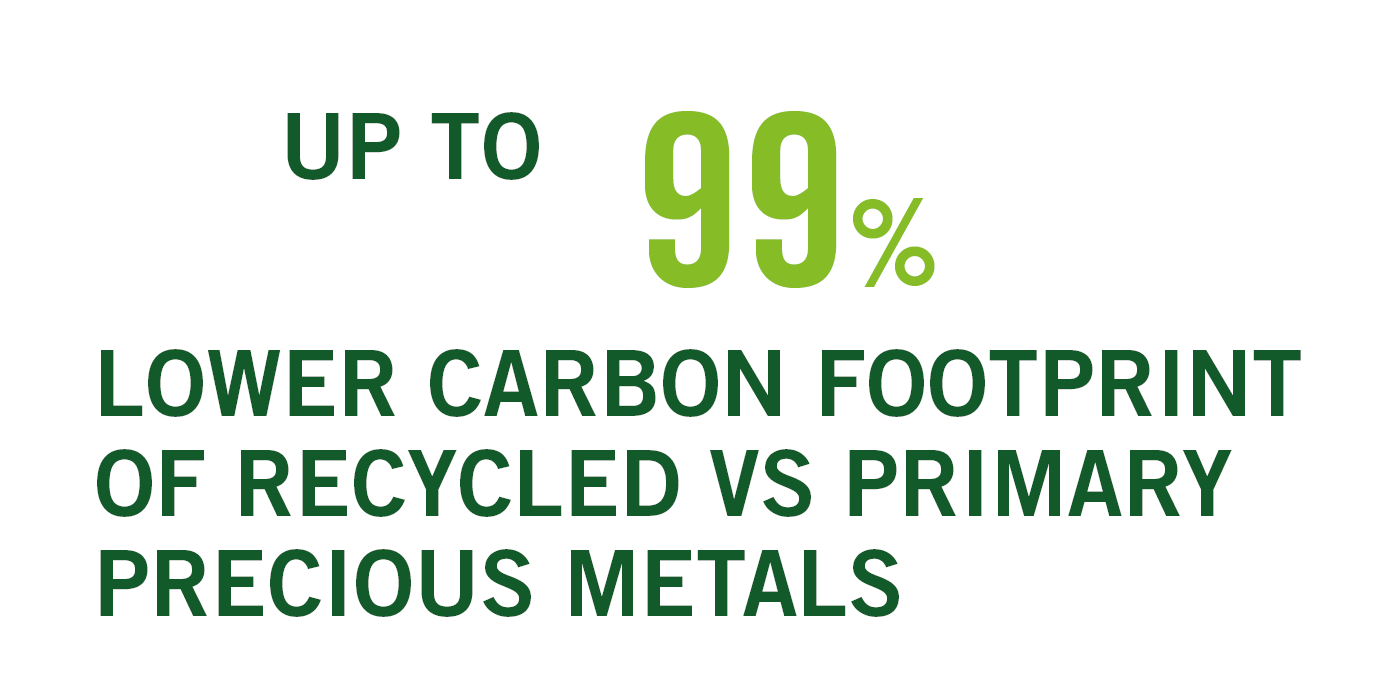
Raising Intake Volumes of Secondary Precious Metals
In the coming years, we aim to raise our intake volumes of secondary platinum group metals (PGM), gold, and silver compared to 2024. In 2024, 62.5% of the PGM processed in our plants came from secondary sources.
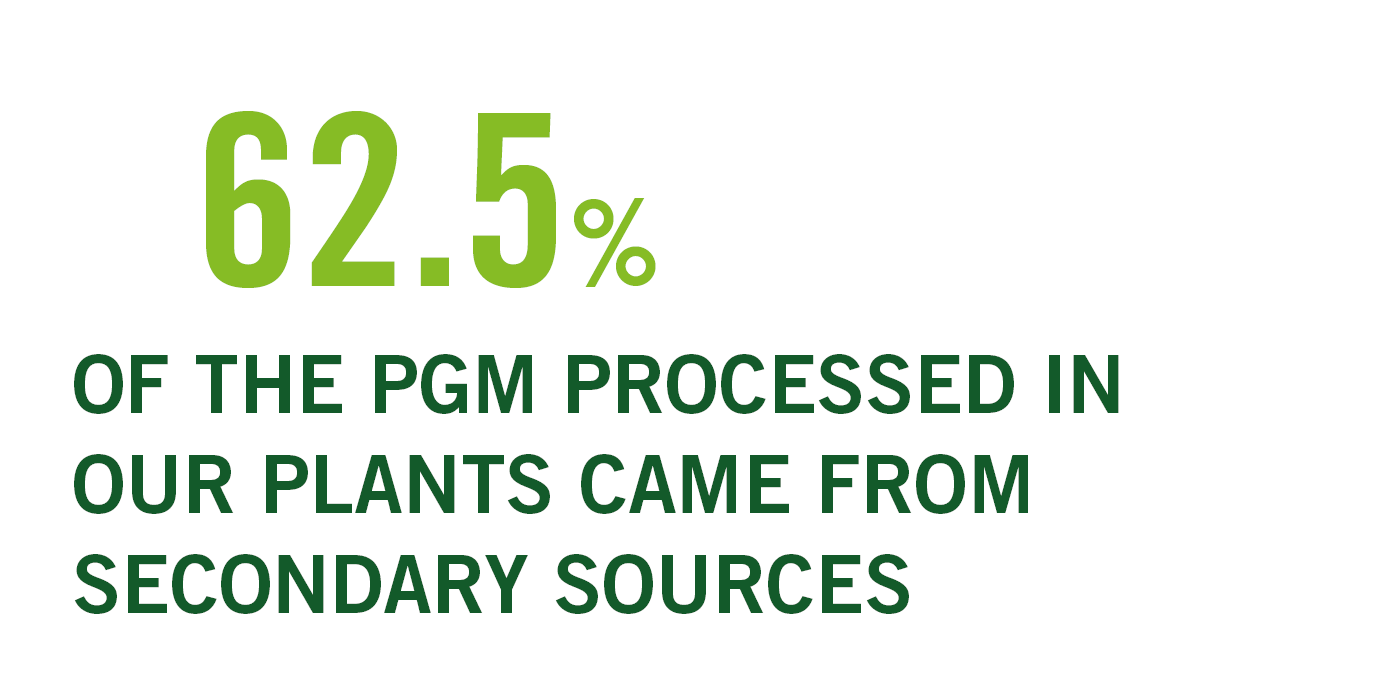
Bringing Water and Biodiversity Activities to The Next Level
While water and biodiversity lie below our materiality threshold, we nevertheless intend to drive progress in these areas. Following detailed analyses at our own sites, we will utilize the knowledge to further improve our reporting and engage with our upstream value chain.
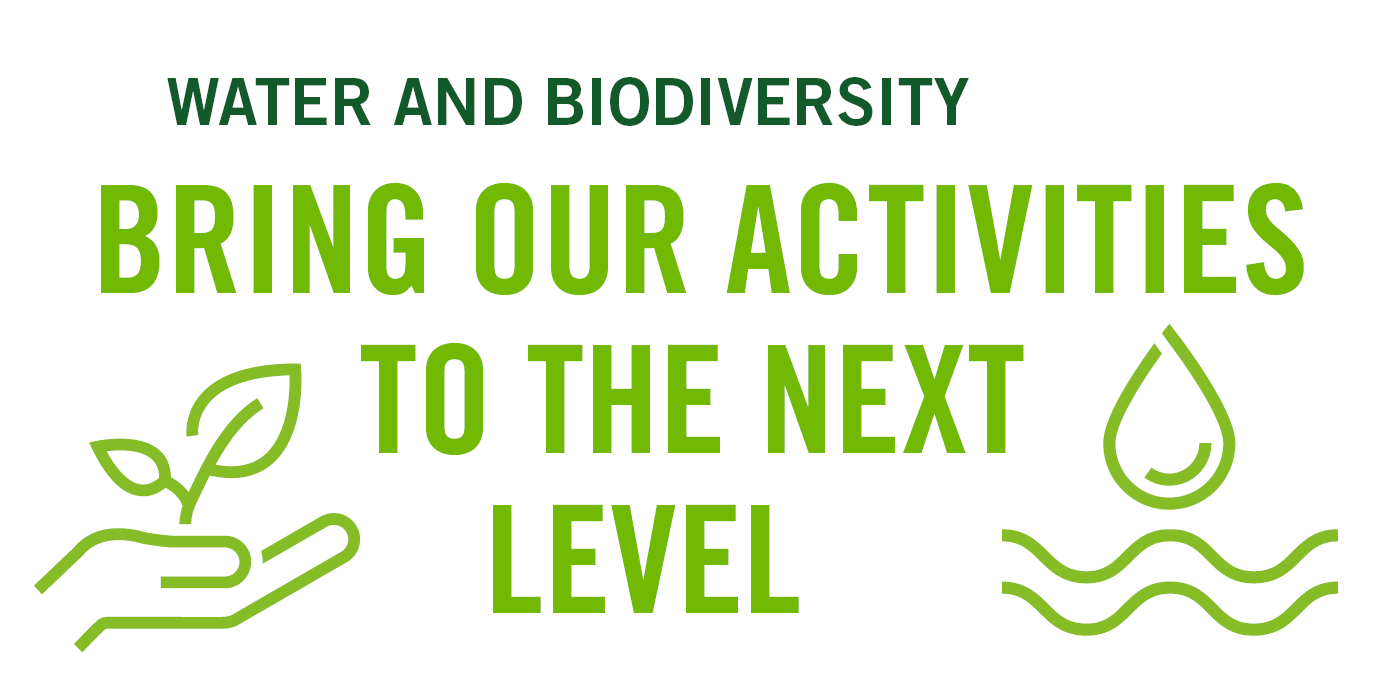
Circular Economy
We refine and recycle all eight precious metals and rhenium from primary and secondary sources. With currently 12 recycling facilities in eight countries around the world, we not only maintain close proximity to our customers but also achieve shorter transportation distances.
We use state-of-the-art pyrometallurgical and hydrometallurgical processes to recover precious metals from secondary sources, such as end-of-life materials, to the maximum extent possible.
We are furthermore systematically investing in the expansion of our recycling and refining capacities worldwide.
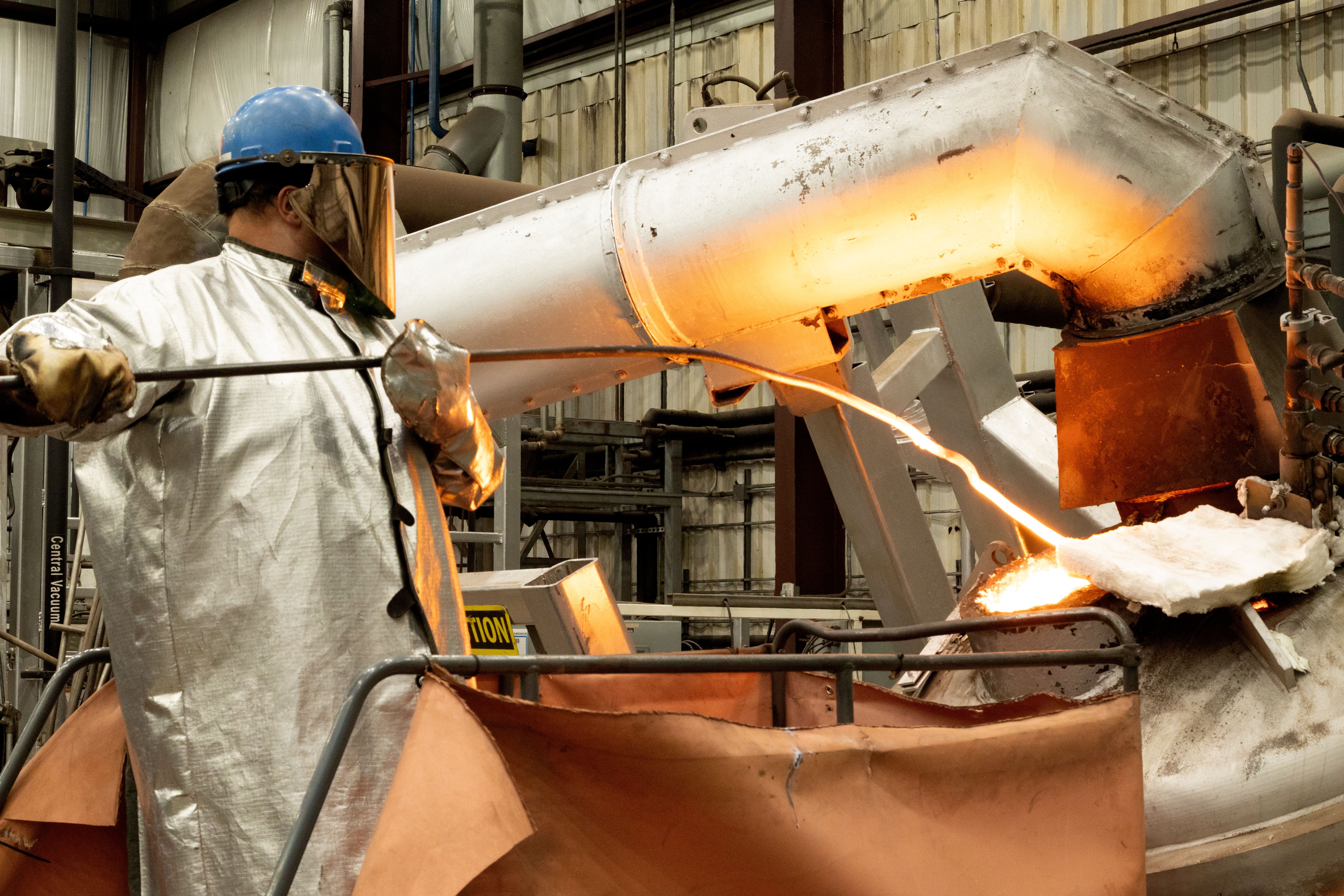
Circlear – Products Made with 100% Recycled Precious Metals
Find out how Circlear can help our customers significantly reduce their Scope 3 emissions. Circlear’s 100% recycled content is based on mass balance and has been verified by TÜV SÜD according to ISO 14021.
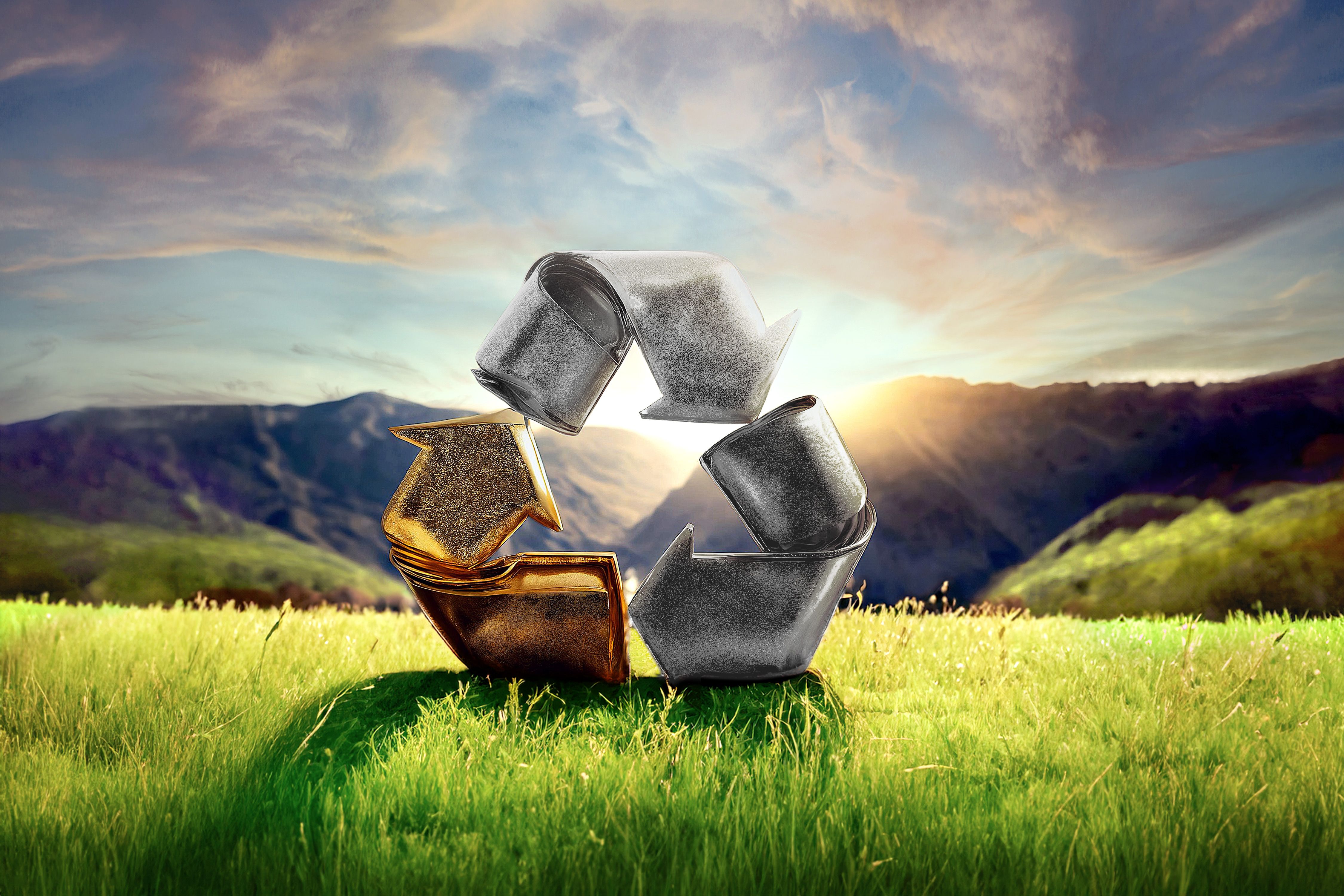
Water
Water plays an important role in our operations. For example, it is needed for cooling our processes, or as a solvent or absorbent in our precious metals recycling processes.
In 2024, we analyzed which of our production and recycling sites are in areas with water risk. We furthermore conducted detailed analyses of the water use at our sites in Hanau, Germany; Mendrisio, Switzerland; and Nanjing, China, which account for over 60% of our water withdrawal.
By the end of 2026, we will standardize the reporting approach for our global operations to close identified gaps. In parallel, we will work to identify measures to reduce our water withdrawal. We will continue to prioritize the sites with the highest water usage.
We will furthermore continue to gather more detailed data about water management from our mining partners in our upstream value chain. As we gain more transparency, we will engage with our mining partners on the reduction of their impacts.
Biodiversity
Heraeus Precious Metals is committed to taking on the challenge to address the drivers of biodiversity loss. We aim to better understand how our business activities contribute to biodiversity loss and to use this understanding to develop strategies to limit and reduce such negative impacts.
On this journey, we are oriented on global frameworks, in particular the Global Biodiversity Framework (GBF) and the Sustainable Development Goals (SDG). We furthermore refer to guidance from the Science Based Target Network (SBTN) and the Taskforce on Nature-related Financial Disclosures (TNFD) to assess, measure, and address this topic, taking into account the latest scientific findings. The guidance is partly still in development and continuously evolving. We aim to closely follow these developments, stay informed on the latest updates, and adopt our approach accordingly in the future.
As biodiversity is closely connected to other environmental matters, there is an overlap with already existing sustainability strategies, targets, and measures.
For our own operations, our activities focus on the three initially identified impacts – GHG emissions, Waste, and Water use.
For upstream mining activities, our biodiversity impact analysis is still ongoing. Our current focus lies on further gaining transparency, by collecting mine-specific data on different sustainability-relevant topics and creating a model that allows us to compare such data.
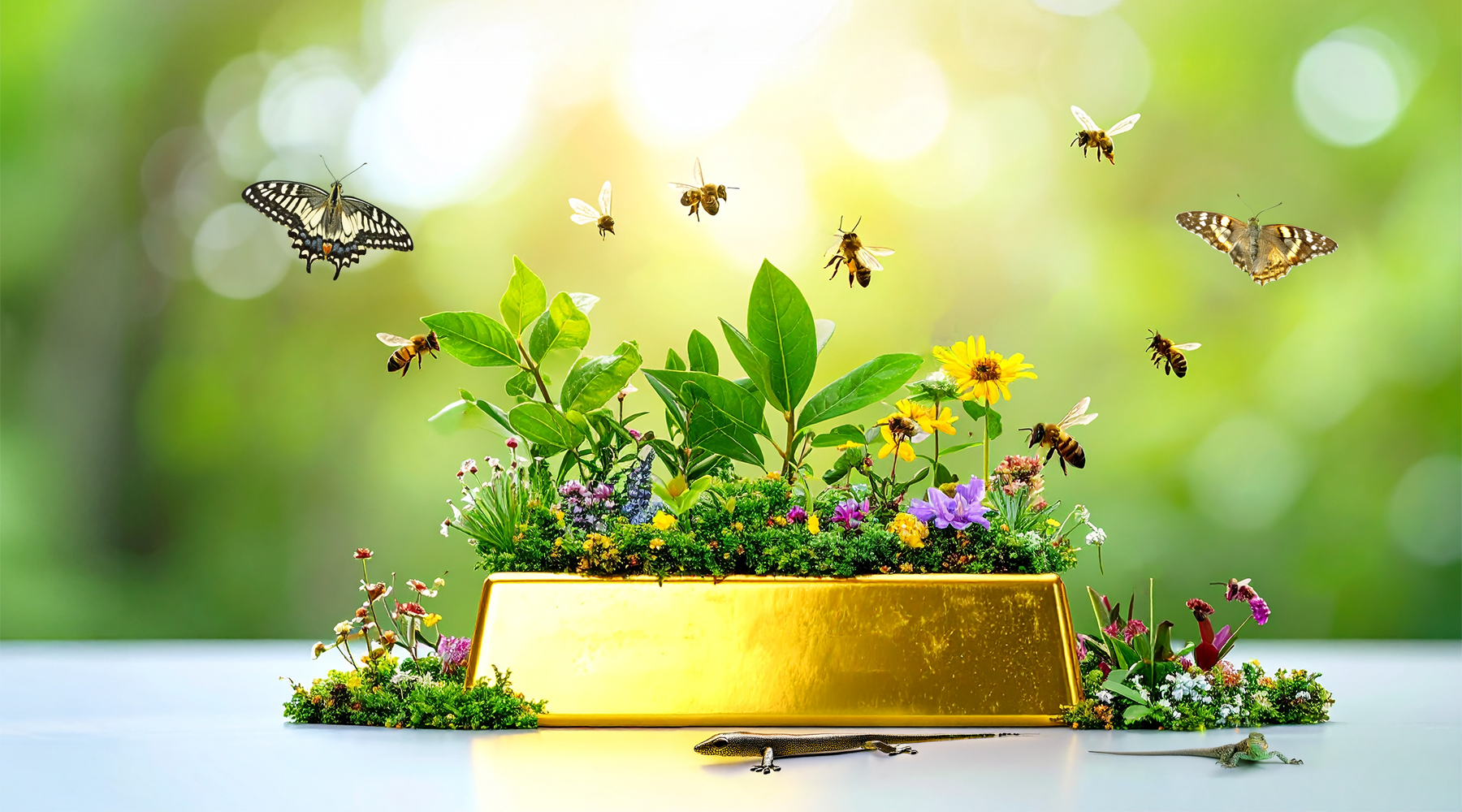
Read As Well
